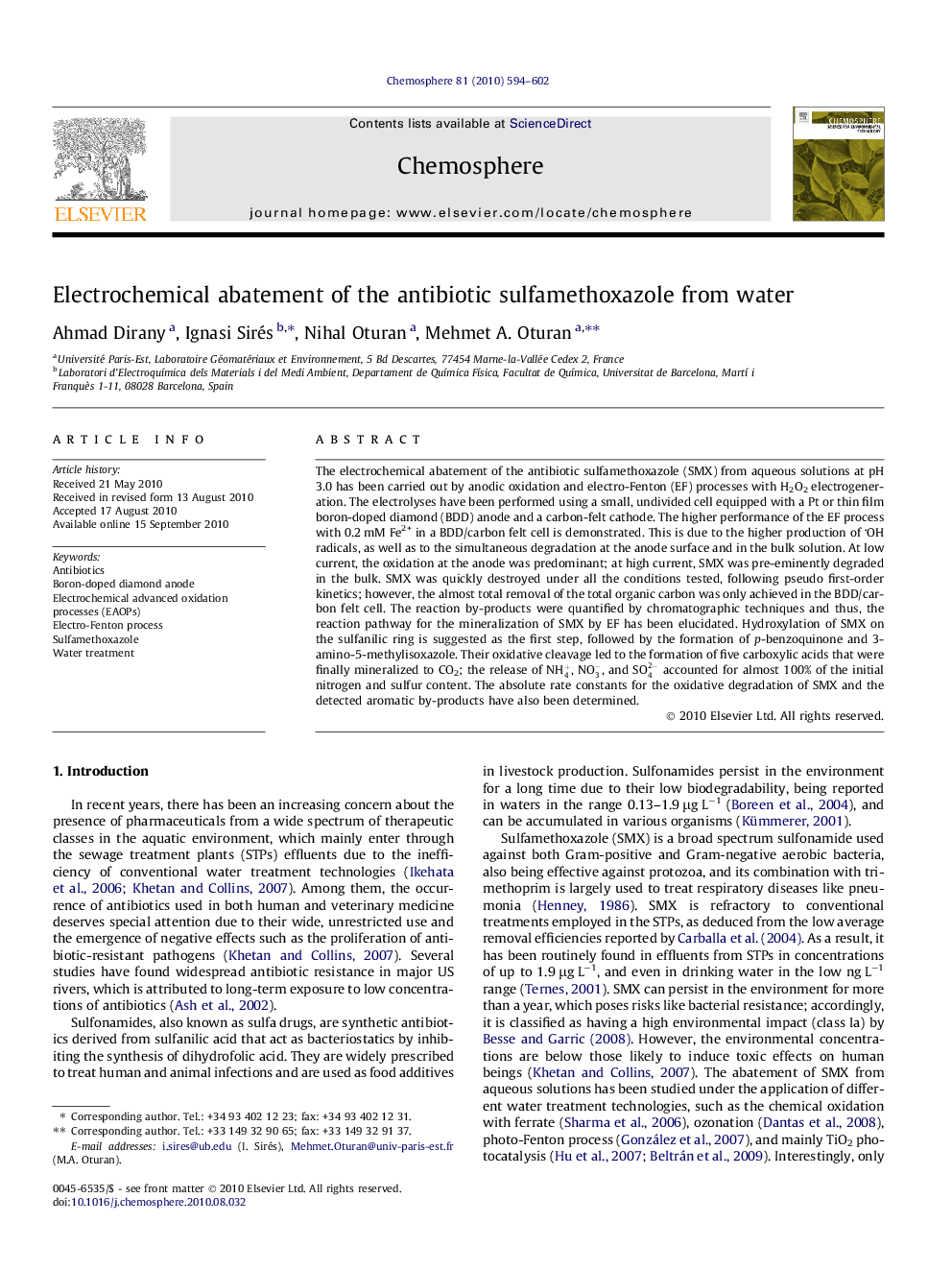| Article ID | Journal | Published Year | Pages | File Type |
|---|---|---|---|---|
| 4411124 | Chemosphere | 2010 | 9 Pages |
The electrochemical abatement of the antibiotic sulfamethoxazole (SMX) from aqueous solutions at pH 3.0 has been carried out by anodic oxidation and electro-Fenton (EF) processes with H2O2 electrogeneration. The electrolyses have been performed using a small, undivided cell equipped with a Pt or thin film boron-doped diamond (BDD) anode and a carbon-felt cathode. The higher performance of the EF process with 0.2 mM Fe2+ in a BDD/carbon felt cell is demonstrated. This is due to the higher production of OH radicals, as well as to the simultaneous degradation at the anode surface and in the bulk solution. At low current, the oxidation at the anode was predominant; at high current, SMX was pre-eminently degraded in the bulk. SMX was quickly destroyed under all the conditions tested, following pseudo first-order kinetics; however, the almost total removal of the total organic carbon was only achieved in the BDD/carbon felt cell. The reaction by-products were quantified by chromatographic techniques and thus, the reaction pathway for the mineralization of SMX by EF has been elucidated. Hydroxylation of SMX on the sulfanilic ring is suggested as the first step, followed by the formation of p-benzoquinone and 3-amino-5-methylisoxazole. Their oxidative cleavage led to the formation of five carboxylic acids that were finally mineralized to CO2; the release of NH4+, NO3-, and SO42- accounted for almost 100% of the initial nitrogen and sulfur content. The absolute rate constants for the oxidative degradation of SMX and the detected aromatic by-products have also been determined.
